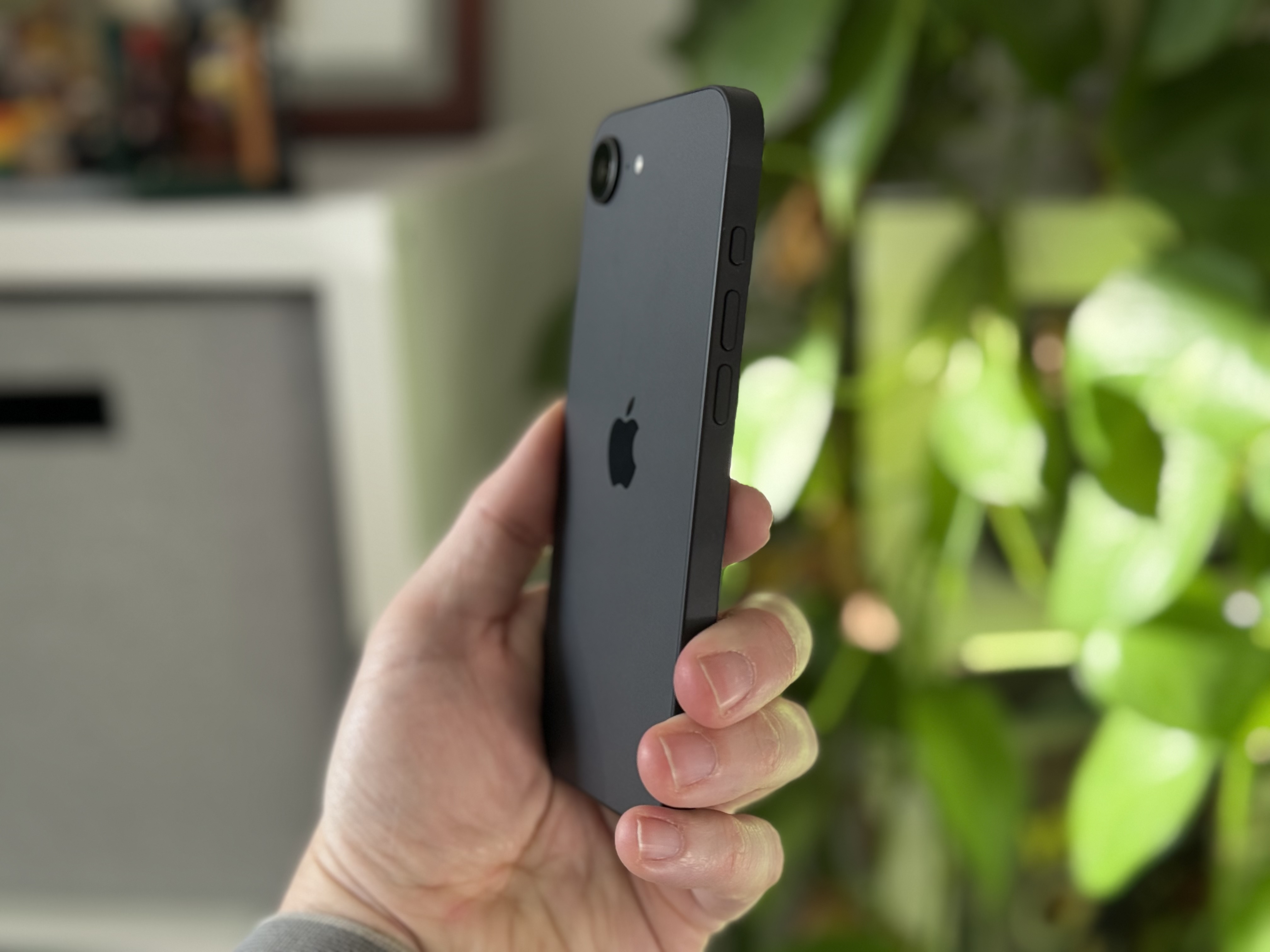Laptop Mag Verdict
Toshiba's Portege Z10t is a powerful 2-in-1 Ultrabook convertible, but the dim display and uncomfortable keyboard hold it back.
Pros
- +
Strong Core i7 performance and fast SSD
- +
Built-in stylus
Cons
- -
Dim display
- -
Uncomfortable keyboard
- -
Poor audio quality
Why you can trust Laptop Mag
If you're constantly on the go, lugging around a laptop and tablet can start to weigh you down. That's where hybrids like Toshiba's Portege Z10t-A2111 come in. A tablet that connects to a full-size keyboard dock, the Portege Z10t combines the convenience of a tablet with the functionality of an ultraportable notebook. And with a powerful Core i7 processor and 256GB solid-state drive, the 11-inch Portege can handle most anything you throw at it. But at $1,799, this high-priced hybrid isn't quite worth the sticker shock.
Design
As a standalone tablet, the Portege Z10t is relatively attractive. Its back panel is made of a gray, textured plastic that makes the device easy to grip. Two air vents on the slate's backside help dissipate the heat generated from the machine's powerful components, but they don't do much for the tablet's aesthetics. The slate's back panel is also home to its camera as well as an integrated stylus slot. The bottom right corner has a chrome Toshiba logo. The Portege's power, volume and rotation-lock buttons are situated on its right edge, making them a bit of a pain to reach when using the hybrid in laptop mode.
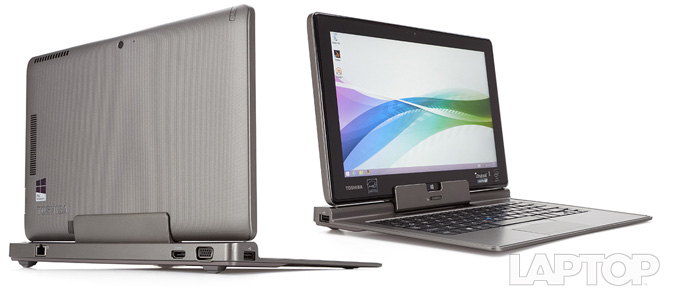
The Z10t's dock packs a full-size keyboard and touchpad, complete with a roomy wrist rest. Notably for a hybrid, the Z10t's keyboard also features a pointing stick and associated buttons. Unfortunately, while the top of the keyboard looks clean and modern, the exposed screws and silver paint on the underside make it look like the bottom of an old microwave.
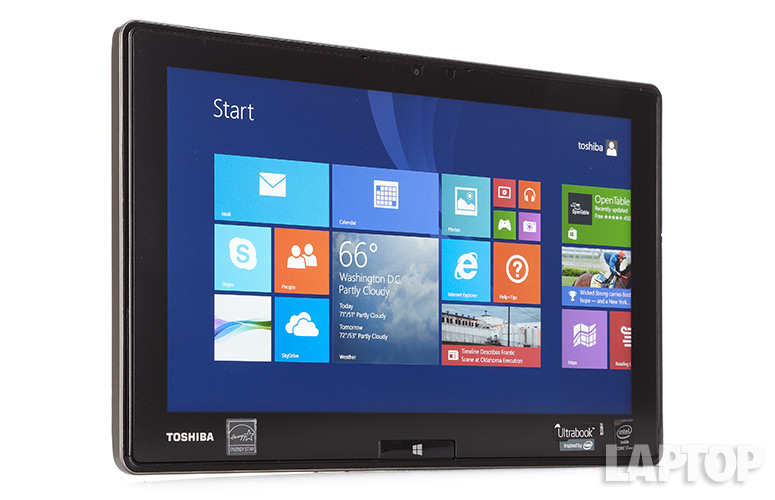
Click to EnlargeIn tablet mode, the Portege Z10t measures 11.8 x 7.4 x 0.49 inches and weighs 1.9 pounds. That's a bit larger than the 11.6-inch Lenovo ThinkPad Helix, which measures 11.7 x 7.4 x 0.46 inches and weighs 1.8 pounds in tablet mode. The 11.6-inch Acer TravelMate X313-M is equally slim, measuring 11.6 x 7.5 x 0.35 inches and weighing 1.8 pounds as a tablet.
MORE: Laptop Buying Guide: 9 Essential Tips
Connect the Z10t to its keyboard dock, and its size and weight increase to 11.8 x 8.7 x 0.78 inches and 3.2 pounds. By comparison, the ThinkPad Helix grows to 0.8 inches thick and its weight to 3.2 pounds with its keyboard. That said, the Lenovo's keyboard base features a built-in battery, something the Portege Z10t doesn't have.
Acer's TravelMate grows just 0.15 inches thicker and weighs 3.1 pounds when connected to its keyboard. Dell's XPS 11, with its 360-degree convertible design, measures 11.8 x 7.9 x 0.6 inches and weighs 2.5 pounds.
Display
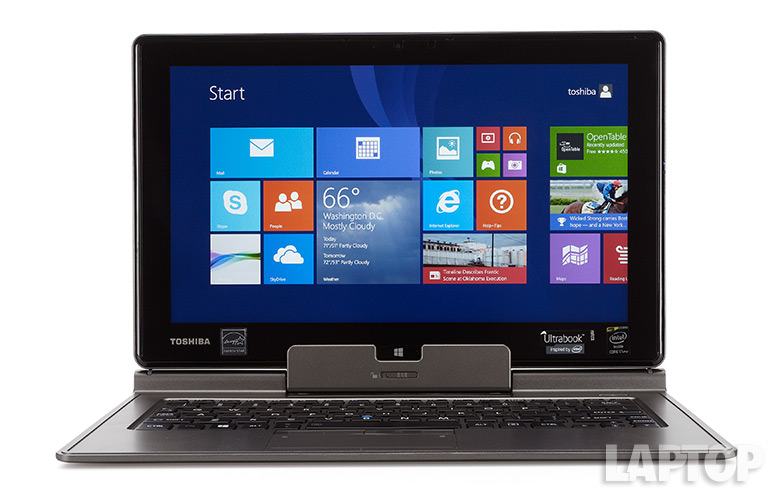
Click to EnlargeThe Portege Z10t's 11.6-inch, 1920 x 1080 matte display offers sharp visuals, but we wish the panel were brighter. Videos and photos looked darker than we'd like. While watching a trailer for "X-Men: Days of Future Past," we had difficulty making out fine details in the characters' faces, especially in low-light scenes.
The Z10t registered just 243 lux (231 nits) on our light meter. By comparison, the ultraportable category average is 265 lux. The ThinkPad Helix topped out at 374 lux, while the TravelMate X313-M hit an impressive 399 lux.
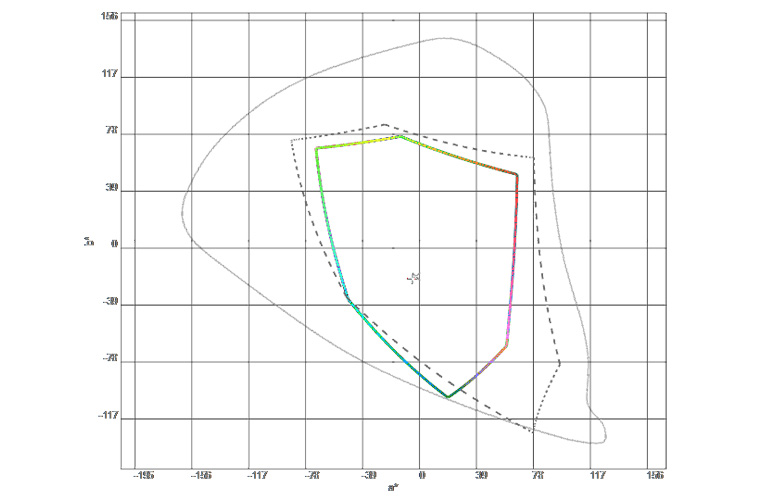
Click to EnlargeThe Portege Z10t displayed 71.6 percent of the sRGB gamut on our color test. That's higher than the ultraportable notebook category average of 65 percent, though lower than the tablet average of 91 percent. The Portege's color reproduction was also relatively accurate, with a Delta-E score of 4.1. (A score of 0 is perfect.) That's better than the ultraportable category average of 7.9, as well as the 4.95 tablet category average.
The Portege Z10t's 10-point touch screen proved responsive during our testing, recognizing our input instantly.
Audio
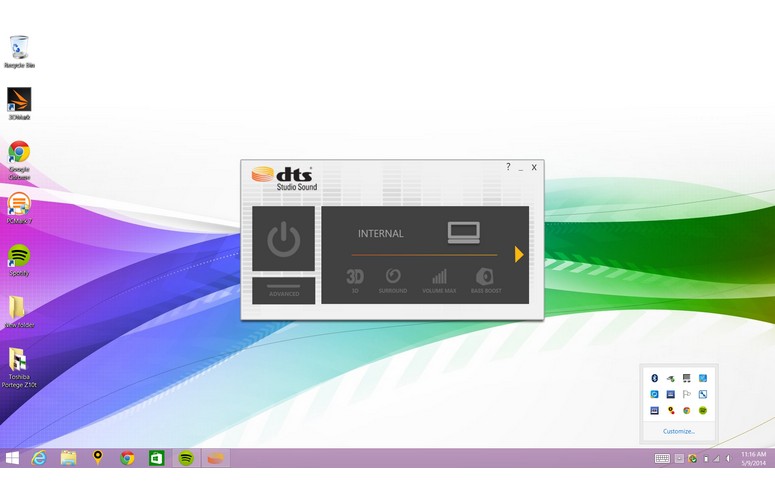
Click to EnlargePositioned on the tablet's bottom edge, the Portege's speakers offered harsh-sounding audio. What's more, when we connected the tablet to the keyboard dock, the audio became slightly muffled due to the speakers' awkward location.
We could barely make out the thumping base hits in DJ Snake and Lil John's "Turn Down for What," even with the included DTS Studio Sound software enabled. We also heard an occasional crackle from the speakers with the volume turned all the way up.
The Portege Z10t's speakers aren't particularly loud, either, registering just 71 decibels on our Laptop Mag Audio Test (this involves playing a steady tone at full volume at a distance of 23 inches). That reading is well off the 84-dB ultraportable category average. The Acer TravelMate X313-M hit 81 dB, while the Dell XPS 11 reached 84 dB.
Keyboard and Touchpad
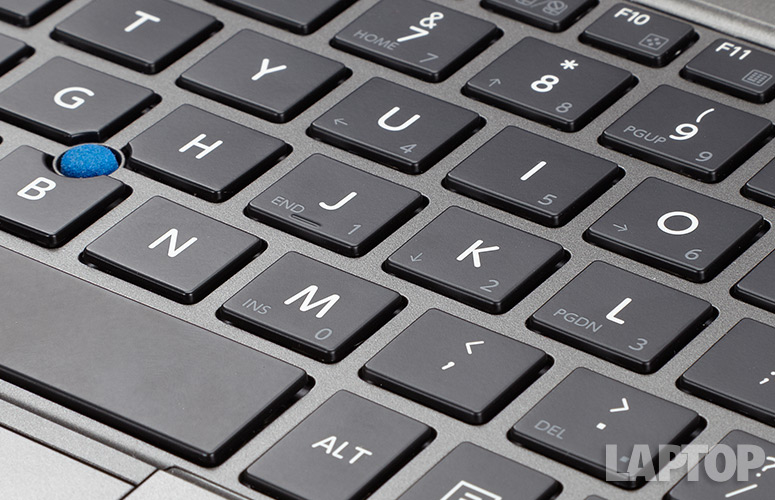
Click to EnlargeTyping on the Portege Z10t's keyboard felt especially awkward, despite the fact that its 1.5mm of key travel falls within the typical 1.5mm to 2.0mm range most laptop keyboards offer. Feedback was also relatively weak, especially toward the edges of the keyboard, making it difficult to tell if we had pressed a key with our pinky finger or not.
The Portege's netbook-sized keyboard sports smaller-than-usual Caps Lock, Shift, Enter and directional keys, making it harder to press these keys when typing quickly. You'll also have trouble using the Portege in your lap, as all of the hybrid's weight is in its tablet portion. As a result, when you put the device in your lap, it has a tendency to fall backward.

Click to EnlargeWhile using the Portege, we registered an average of 74 words per minute with an error rate of 2 percent on the Ten Thumbs Typing Tutor. That's a lower score than our usual average of 80 words per minute with a 1 percent error rate.
The Z10t's 3.3 x 1.75-inch touchpad includes a pair of outlines for its right and left mouse buttons. Unfortunately, neither of the buttons move, which was something we never really got used to. We were also slightly bothered by the fact that the touchpad's Windows 8 gestures were disabled by default. Thankfully, the Portege's pointing stick and its included physical buttons, situated below the spacebar, were accurate and responsive.
Stylus
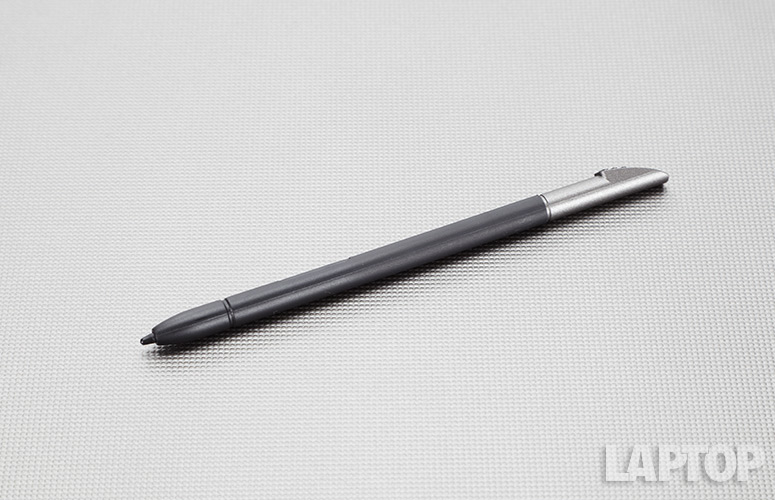
Click to EnlargeThe Portege Z10t's built-in stylus proved accurate and easy to use during our testing. While using the included Microsoft Journal app, we wrote a to-do list without noticing any issues with palm rejection. We were also pleased to see that Toshiba included a slot in which to place the stylus when you're not using it. Similarly, we were impressed with how well the handwriting recognition engine translated our chicken scratch, though that's more a function of Windows 8.1 than the Portege.
For users who find the built-in stylus too small, Toshiba also includes a much thicker stylus, which unfortunately can't be tethered to the Z10t.
Ports and Webcam
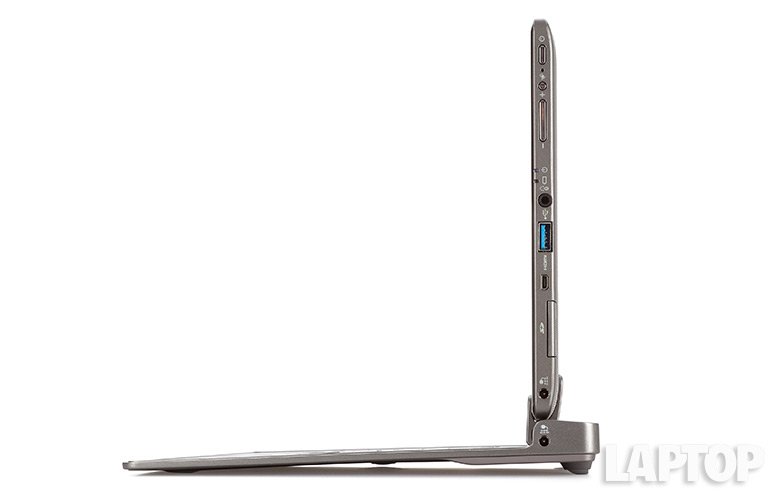
Click to EnlargeAs with many ultraportable notebooks and hybrids, the Toshiba Portege Z10t has a limited number of port options. The tablet's right edge includes a USB 3.0 port, mini HDMI slot, dual microphone/headphone jack, SD Card slot and a power port. In the slate's top left corner is its stylus holder. The keyboard base gets a power jack on its right edge and a USB 2.0 port on its left edge. Around back are an HDMI slot, VGA and Ethernet.
The Portege Z10t's 3-megapixel rear-camera captured grainy, dull images. A shot of a busy intersection was blurry and slightly distorted. Video was equally subpar.
Heat
After the Portege Z10t streamed a 15-minute Hulu Plus video, the device's keyboard and touchpad topped out at 71 degrees Fahrenheit. In fact, the tablet's hottest point, its underside, reached just 89 degrees. We consider anything lower than 95 degrees to be comfortable.
Performance
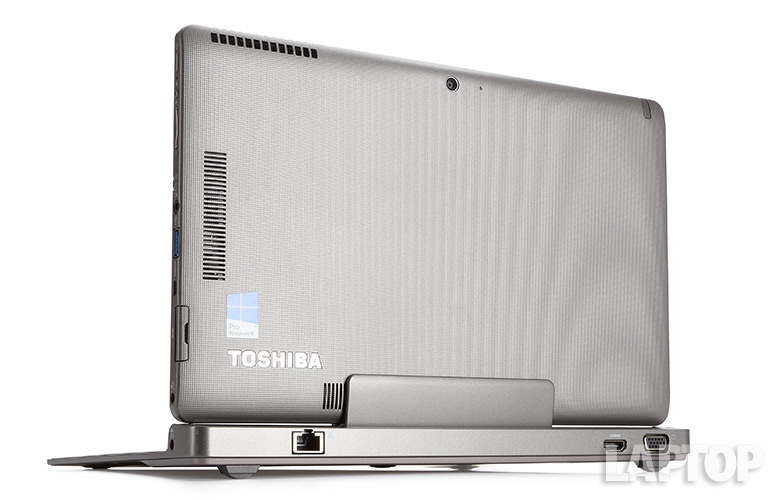
Click to EnlargeThanks to its 1.7-GHz Intel Core i7-4610Y processor with 8GB of RAM and 256GB solid-state drive, the Toshiba Portege Z10t turned in a solid performance across the board. We opened 10 tabs in Chrome, 10 tabs in Internet Explorer, ran a full system scan using Norton Internet Security and streamed a Hulu Plus video without seeing any slowdown.
On PCMark 7, a synthetic benchmark that measures a system's overall performance, the Toshiba Portege Z10t scored 4,960. That's far better than the ultraportable notebook category average of 3,914. The $909 Acer TravelMate X313-M and its third-generation 1.4-GHz Intel Core i3-3229Y, 4GB of RAM and 120GB SSD scored an unimpressive 3,026.
The $1,299 Dell XPS 11, with its 1.9-GHz Intel Core i5-4210Y CPU, 4GB of RAM and 256GB SSD, notched 4,122, while the Lenovo ThinkPad Helix and its 1.8-GHz Intel Core i5-3317U chip, 4GB of RAM and 128GB SSD scored 4,447.
It took the Portege Z10t just 8 seconds to boot Windows Pro 8.1. That's faster than the 12-second category average, as well as the Dell XPS 11's boot time of 11 seconds. Both the Acer TravelMate X313-M and the Lenovo ThinkPad Helix came to life in 10 seconds.
The Portege also proved speedy on our Laptop Mag File Transfer Test, copying 4.97GB of mixed media files in 26 seconds at a rate of 196 MBps. That's faster than the category average of 128 MBps, and far better than the TravelMate X313-M's 81 MBps. The ThinkPad Helix's SSD ran at 170 MBps, while the Dell XPS 11 matched the Portege's rate of 196 MBps.
The Portege Z10t took 5 minutes and 9 seconds to complete our OpenOffice Spreadsheet Macro test, which matches 20,000 names with their addresses. That's more than 2 minutes faster than the category average of 7:53. The TravelMate X313-M took 12:38 to finish the test, while the Dell XPS 11 took 7:13. The ThinkPad Helix finished in 5:23.
Graphics Performance
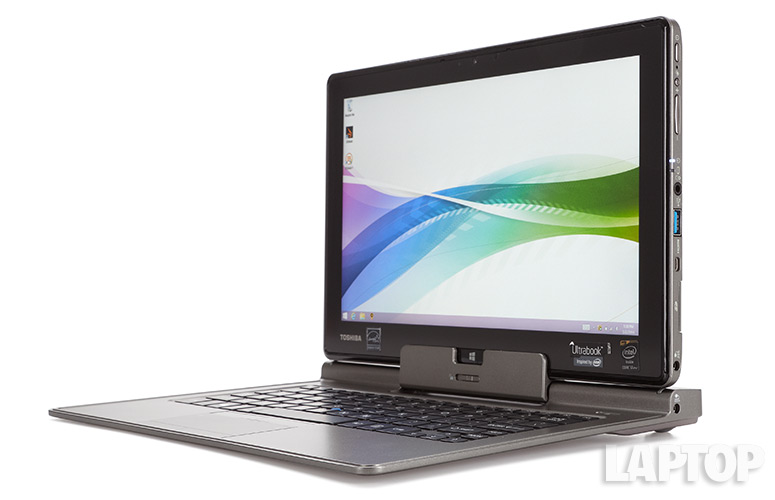
Click to EnlargeThis Toshiba can play high-def movies and can handle light gaming, but that's about it in terms of graphics. The Portege's integrated Intel HD Graphics chip helped the hybrid score 225 on the 3DMark Fire Strike Extreme benchmark. That's just above the category average of 212. The Acer TravelMate, which also sports an integrated graphics CPU, hit 174, while the XPS 11 mustered 124.
While playing "World of Warcraft" with the resolution set to 1366 x 768 and graphics on autodetect, the Portege recorded an average frame rate of 44 frames per second. The ultraportable average is 33 fps. The TravelMate hit just 18 fps, while the Dell XPS 11 topped out at 23 fps. When we pushed the resolution up to 1080p, the Portege registered an unplayable 24 fps.
Software

Click to EnlargeToshiba installed a light amount of software on the Portege Z10t. Of the few Toshiba apps included with the Portege, which include things like Toshiba Book Place, Toshiba Central and Toshiba App Place, the most useful tool was Toshiba Service Station. From here you can search for available firmware and software updates and install them in a snap.
In addition to Windows and Toshiba apps, the Portege includes Nuance's Dragon Assistant voice control software, as well as a 30-day trial of Norton Internet Security.
Battery Life

Click to EnlargeThe Portege Z10t lasted 7 hours and 24 minutes on our Laptop Mag Battery Test, which involves continuous Web surfing over Wi-Fi with the display brightness set to 100 nits (39 percent). That's a few minutes short of the ultraportable category average of 7:45, but much better than the Acer TravelMate's anemic time of 4:51.
The Lenovo ThinkPad Helix ran for 8:10 on our old battery test, which involved continuous Web surfing with the display brightness set to 40 percent. The Dell XPS 11, however, had the longest battery life of the group, running for 8:11 on our old test.
MORE: 10 Laptops with the Longest Battery Life
As the Z10t can be used as a tablet, we ran it on our battery test using the testing parameters we use on slates as well (continuous Wi-Fi surfing with the display set to 150 nits or 53 percent). At that brightness level, the Portege lasted 6:44, which is well off the tablet category average of 8:02.
Configurations
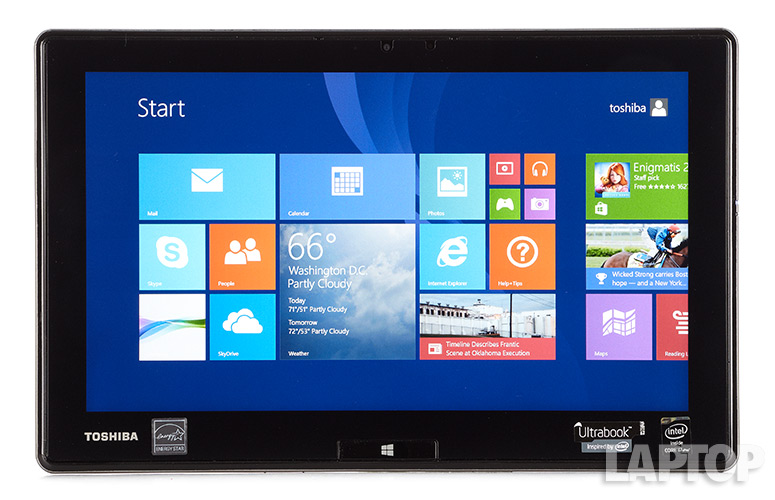
Click to EnlargeOn its site, Toshiba offers three configurations of the Z10t. The least expensive model, the Toshiba Portege Z10t-A1110, costs $1,449, and includes Windows 8 Pro, an Intel Core i5-3439Y processor, 4GB of RAM and a 128GB SSD. For $50 more, the Z10t-A2110 has an Intel Core i5-4300Y processor and Windows 8.1 Pro.
Our review unit, the Z10t-A2111, is the most expensive, at $1,799; it has an Intel Core i7-4610Y processor, 8GB of RAM and a 256GB SSD.
Verdict
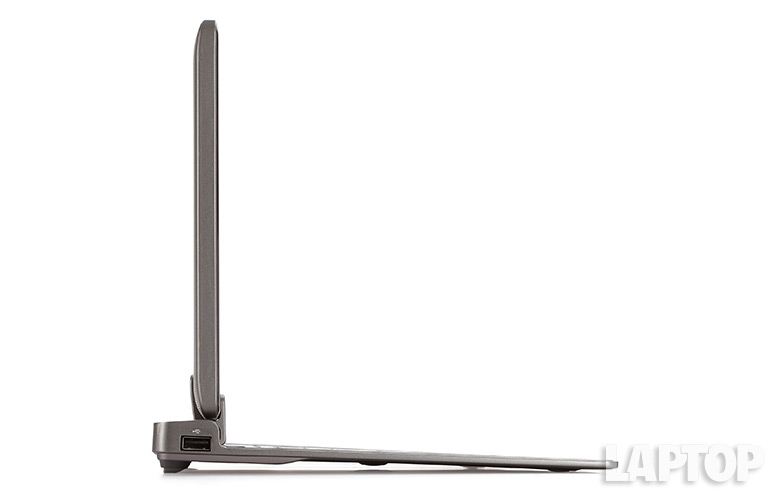
Click to EnlargeWith its powerful components, built-in stylus and versatile keyboard dock, the Toshiba Portege Z10t has the makings of a quality Windows 8.1 hybrid. Unfortunately, its dim display, poor audio quality and uncomfortable keyboard make this hybrid difficult to recommend, especially at $1,799. If you're interested in a 2-in-1 device, we suggest you opt for the Lenovo ThinkPad Helix, which offers a beautiful display, excellent keyboard and long battery life, all for $1,205.
Toshiba Portege Z10t-A2111 Specs
| Bluetooth | Bluetooth 4.0 |
| Brand | Toshiba |
| CPU | 1.7-GHz Intel Core i7-4610Y |
| Card Slots | SD memory reader |
| Company Website | www.toshiba.com |
| Display Size | 11.6 |
| Graphics Card | Intel HD Graphics |
| Hard Drive Size | 256GB |
| Hard Drive Speed | n/a |
| Hard Drive Type | SSD Drive |
| Native Resolution | 1920x1080 |
| Operating System | Windows 8.1 Pro |
| Optical Drive | None |
| Ports (excluding USB) | Ethernet, VGA, Docking Connector, USB 3.0, DC-in, USB 2.0, Combo Headphone/Mic Jack, SD card slot, Mini HDMI, HDMI |
| RAM | 8GB |
| RAM Upgradable to | 8GB |
| Size | Tablet: 11.8 x 7.4 x 0.49 inches With keyboard: 11.8 x 8.7 x 0.78 inches |
| Touchpad Size | 3.3 x 1.75 inches |
| USB Ports | 2 |
| Video Memory | Shared |
| Warranty/Support | 3 Year Standard Limited Warranty |
| Weight | 1.9 pounds as tablet 3.2 pounds with keyboard dock |
| Wi-Fi | 802.11 b/g/n/ac |
| Wi-Fi Model | Intel Dual Band Wireless-AC 760 |
